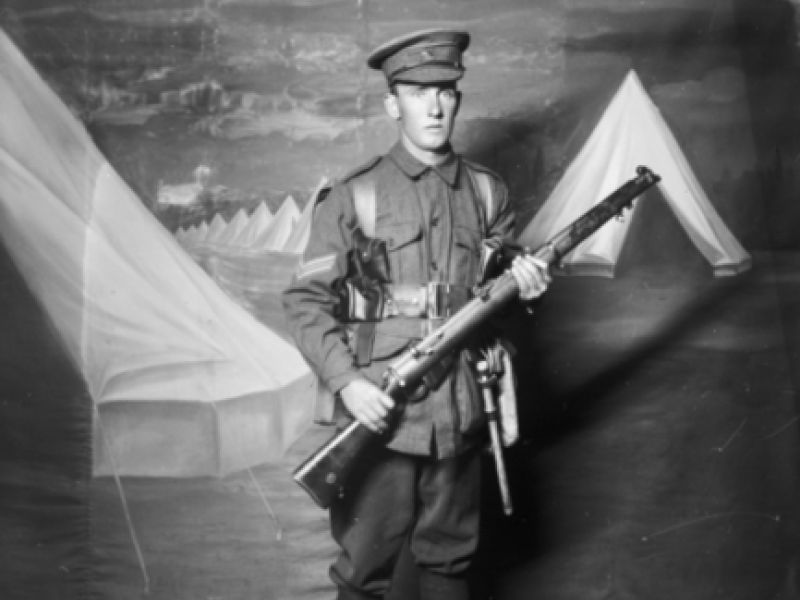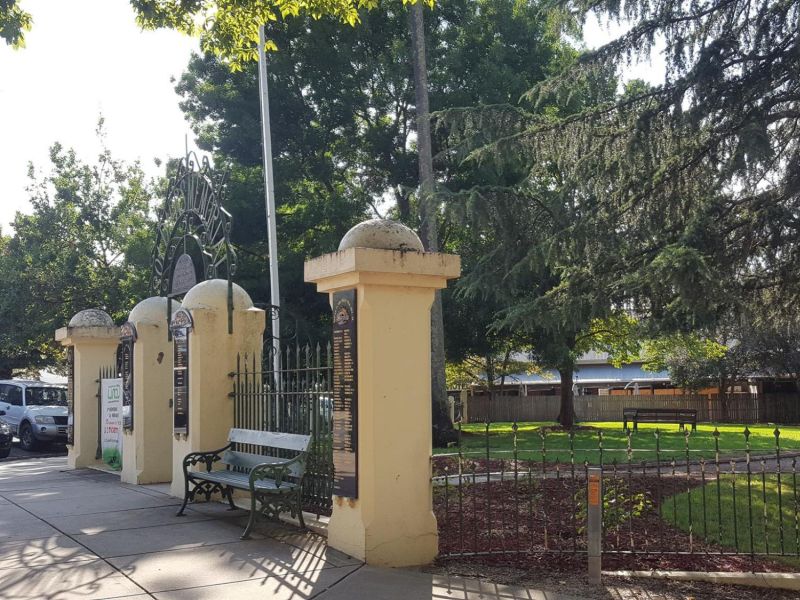Edgar Allan Maxwell
Edgar was born in 1892 at Kiewa in Victoria. He was the seventh of ten children for George and Margaret (née Anderson) Maxwell. The family lived in the Yackandandah/Sandy Creek area where George was an engine-driver. Edgar and his siblings all attended the local Sandy Creek State School.
When Edgar was only 14 tragedy struck the close family. He went out fox shooting with his brother John, who was two years older. The gun had only been bought a few days earlier but it misfired. John was examining the gun when somehow the cartridge exploded and he took the full force in his face. The charge entered under the cheek bone and came out at the eye, taking the eye with it. One can only imagine the effect this had on Edgar.
Edgar enlisted on the 7th of February, 1916, at St Klida Barracks in Melbourne. At the time he was a single, 24 year-old farmer from Sandy Creek near Wodonga. He was allocated the Regimental Number 5054 and placed in the 13th Reinforcements for the 22nd Infantry Battalion, 6th Brigade of the 2nd Australian Division. His initial training was conducted at Seymour with D Company of the 10th Depot Battalion.
The 13th Reinforcements embarked on HMAT A33 Ayrshire at Melbourne on the 2nd of July. Two months later to the day he disembarked at Plymouth, England. Edgar had been feeling ill as the Ayrshire birthed and was immediately admitted to the Military Hospital at Devonport. After two and half weeks he was posted to No. 1 Convescent Depot. Further training was then undertaken at Larkhill Camp in Wiltshire.
On the 19th of November the reinforcements for the 22nd Battalion embarked on the SS Onward and made the short trip across the English Channel from Folkstone. Extensive training was carried out at the infamous bullring at Etaples. The English poet, Wilfred Owen (who was killed in action one week before the Armistice was signed) described the camp as the “bull ring” because of the brutality of the instructors and the general harsh conditions that reigned there. Edgar was finally taken on strength with the 22nd Battalion on the 4th of December, 1916. At the time the battalion was billeted in the village of Flesselles, just north of Amiens in France.
Edgars first experience of fighting on the Western Front occurred in late December of 1917, when the battalion moved back into the firing line near Fricourt, a few kilometres east of Albert. Whilst in the front line the battalion would undertake patrols out into no-mans land, with occasional raiding parties to gather intelligence and the odd prisoner. Casualties occured while on these raids and also from the shelling that took place.
On the 22nd of February Edgar was admitted to the 3rd Casualty Clearing Staion suffering from diptheria. On the 5th of April he was evacuated to England where he was admitted to the Guilford War Hospital. Six weeks later he was given a short furlough before being posted to the Training Depot at Hurdcott Camp near the village of Fovant in Wiltshire. Edgar did not rejoin his battalion until the 31st of July, 1917.
In early October the 22nd Battalion was in the front line at Zonnebeke. On the 3rd of October it suffered over 30 casualties, some from from friendly fire. Edgar was amongst the casualties.
This was the second son that George and Margarat Maxwell had sacrificed to the war. Edgar’s older brother William having died of wounds in Egypt that he had sustained whilst fighting at gallipoli with the 11th Battalion.
Edgar was buried in Railway Dugouts Burial Ground (Transport Farm), Ypres, Flanders, Belgium. He is also remembered on the Australian War Memorial Roll of Honour, and the Yackandandah Memorial Gardens. For his service during the war the British War Medal, and the Victory Medal

 Stephen Learmonth
Stephen Learmonth